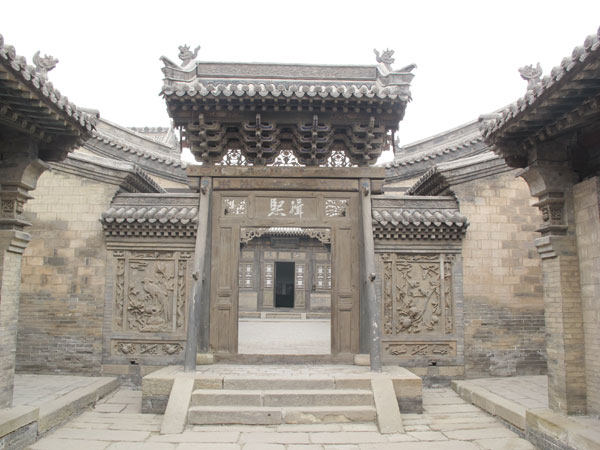Simply majestic
Updated: 2013-05-09 00:19
By Li Yang (China Daily)
|
||||||||
The Chang Family Manor in Yuci county, Shanxi province, was first built in the Qing Dynasty (1644-1911). But its spirit remains alive today, Li Yang discovers.
 |
|
The 1,000-house Chang Family Manor is a witness to the family's past glory and a showcase of traditional architecture and artworks of brick sculptures. Li Yang / China Daily |
I did not expect to see such an ancient grand mansion in remote northern China when the country road leads me to Chang Family Manor in Yuci county, Shanxi province.
Standing in front of the 10-meter-high gate, I would associate the wall, moat and gate tower with a well-off city, rather than a private estate.
The family's ancestor, Chang Zhonglin, fled to neighboring Yuci, because of famine in his home in Taigu county, and worked as a shepherd in late Ming Dynasty (1368-1644). His son ventured into tea business and prospered in early Qing Dynasty (1644-1911), and started building the mansion, which gradually expanded to 4,000 houses across 60 hectares.
The 1,000-house manor today is only one fourth of its original size. The rest were either destroyed in wars or demolished during the "cultural revolution" (1966-76).
Having seen so many shoddy palaces and temples, I'm intrigued immediately by the dilapidation and originality demonstrated by the manor with the key colors of gray, earth tone and black.
There is a slab-stone-covered square of about the size of six basketball courts in the mansion, which connects a 600-meter-long and 20-meter-wide straight flagstone road, called Back Street.
The road used to be one of the two main passages in the center of the manor. Now only half of it is reserved with the buildings located on its north.
To the north of the square is also an ancestral temple of the Chang family. All the important names in the family's history are carved on wooden tablets and worshipped in the hall. Their stories are recorded in the family files kept in the temple.
In its heyday, the Chang family controlled 40 percent of Sino-Russia tea trade over about 20 years in mid-Qing Dynasty. They planted tea in Wuyi Mountain in Fujian province and transported the tea to Kyakhta in Siberia through Zhangjiakou in Hebei province and Mongolian Plateau.
West of the temple is Chang Family Academy, made up of classrooms, a library and lecture halls.
The three-story library is the most magnificent construction, demonstrating the highest artistic values in the manor. The handwriting of hundreds of famous ancient calligraphers and 44 emperors is carved on stone tablets embedded in walls along the corridors.
A small garden livens up the center of the academy's yard.

 'Taken 2' grabs movie box office crown
'Taken 2' grabs movie box office crown
 Rihanna's 'Diamonds' tops UK pop chart
Rihanna's 'Diamonds' tops UK pop chart
 Fans get look at vintage Rolling Stones
Fans get look at vintage Rolling Stones
 Celebrities attend Power of Women event
Celebrities attend Power of Women event
 Ang Lee breaks 'every rule' to make unlikely new Life of Pi film
Ang Lee breaks 'every rule' to make unlikely new Life of Pi film
 Rihanna almost thrown out of nightclub
Rihanna almost thrown out of nightclub
 'Dark Knight' wins weekend box office
'Dark Knight' wins weekend box office
 'Total Recall' stars gather in Beverly Hills
'Total Recall' stars gather in Beverly Hills
Most Viewed
Editor's Picks

|

|

|

|

|

|
Today's Top News
Shenzhou X astronaut gives lecture today
US told to reassess duties on Chinese paper
Chinese seek greater share of satellite market
Russia rejects Obama's nuke cut proposal
US immigration bill sees Senate breakthrough
Brazilian cities revoke fare hikes
Moody's warns on China's local govt debt
Air quality in major cities drops in May
US Weekly

|

|








